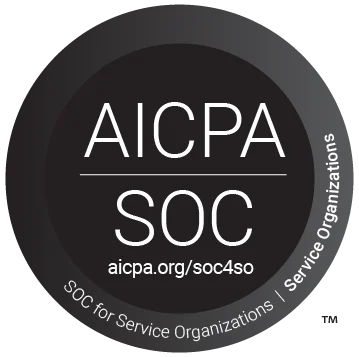You wouldn’t use a rotary phone in the age of smartphones-so why run your business on legacy infrastructure?
Many organizations are still clinging to outdated tech stacks that are expensive to maintain, hard to scale, and ill-suited for today’s cloud-first world. Whether due to sunk costs, fear of disruption, or lack of a clear modernization roadmap, this inertia holds businesses back.
But here’s the truth: the longer you wait, the more you pay-in money, performance, and competitive edge.
This blog breaks down why now is the time to modernize your cloud stack, what modernization really means, and how to do it without disrupting your business.
Why Legacy Systems Are Dragging You Down
Legacy doesn’t just mean “old”-it means brittle. These systems were designed for a different era, when scalability, speed, and agility weren’t business imperatives. In 2025, the market moves too fast to be tethered to inflexible, outdated platforms.
Here’s what you risk by staying legacy:
- High costs: Maintaining old systems and hardware eats up IT budgets that could be spent on innovation.
- Security vulnerabilities: Legacy systems are often not patchable or built for modern cyber threats.
- Incompatibility: They don’t play well with APIs, cloud-native apps, or modern DevOps practices.
- Poor user experience: Slow performance, limited features, and mobile incompatibility hurt productivity and customer satisfaction.
- Talent drain: Engineers don’t want to work on outdated tech.
What Does “Modernizing” a Cloud Stack Actually Mean?
Modernization isn’t just lifting and shifting old code into a cloud VM. It’s a strategic transformation that aligns your infrastructure with your business goals.
A modern cloud stack is:
- Cloud-native or cloud-optimized: Built or refactored to take full advantage of cloud elasticity, scalability, and managed services.
- Composable and API-driven: Enables rapid integration and innovation across systems.
- Secure by design: Implements Zero Trust, identity-driven access, and automated policy enforcement.
- Automated and observable: Uses IaC, CI/CD, and monitoring to drive efficiency and resilience.
- Built for speed and agility: Supports rapid prototyping, deployment, and scaling.
Signs It’s Time to Modernize
If you’re still unsure whether you need to modernize, look for these red flags:
- Your cloud costs keep rising without performance gains.
- You need weeks or months to launch new features.
- Your teams complain about tool sprawl or brittle systems.
- Your customer experience is hampered by slow, outdated apps.
- Your compliance team is nervous about security gaps.
If any of these hit home, you’re not alone-and you’re not stuck.
Modernization Doesn’t Have to Mean Disruption
One of the biggest fears we hear from organizations is:
“We can’t afford to slow down to modernize.”
But here’s the thing-done right, modernization accelerates your business rather than interrupting it. The key is a phased, risk-aware approach that meets you where you are.
Key Steps to Modernization:
- Assess your current state:
Conduct an inventory of your workloads, dependencies, and costs. Tools like Google Cloud’s Migrate for Compute Engine or Fit Assessment can help. - Define your goals:
Are you optimizing for performance, cost, security, or innovation? Your goals determine the modernization path-lift-and-optimize, containerize, or fully refactor. - Build a roadmap:
Prioritize modernization efforts based on business value and risk. Start with “low-hanging fruit” that delivers quick wins. - Automate wherever possible:
Use IaC (Infrastructure as Code), CI/CD pipelines, and cloud-native tooling to drive consistency and speed. - Train and empower your team:
Upskill your people to embrace DevOps, security automation, and cloud-native thinking. Cloud success is a culture shift as much as a tech one.
Case in Point: From Legacy Lock-In to Cloud-Native Speed
A mid-size logistics firm came to us running a decade-old monolith on-prem. Customer onboarding took 10 days. Releases happened quarterly-if that. They knew they had to move but feared the disruption.
What we did:
- Conducted a full workload assessment.
- Built a modernization plan, starting with containerizing the customer onboarding platform.
- Migrated in phases, using hybrid infrastructure to avoid downtime.
- Implemented CI/CD pipelines and observability with Google Cloud tools.
- Trained their team on SRE principles and agile ops.
The result?
- Customer onboarding dropped to 30 minutes.
- Deployments went from quarterly to weekly.
- Cloud costs stabilized-and innovation took off.
That’s the power of getting out of legacy.
Why Now Is the Right Time
Google Cloud is offering generous credits and incentives to support organizations in making the leap-especially if you’re migrating legacy workloads. And the market is only accelerating.
Every month you wait, you fall further behind.
Let Clarity Help You Break Free from Legacy
At Clarity, we specialize in helping organizations modernize their cloud stack-without disruption and without the red tape. Whether you’re migrating from on-prem, optimizing lift-and-shift environments, or rearchitecting entirely, we guide you every step of the way.
We’re a Google Cloud Partner with deep experience in legacy transformations, cloud-native architectures, and secure-by-design approaches. Our team becomes an extension of yours-helping you move fast, stay secure, and deliver business impact from Day 1.
Ready to Modernize?
Let’s take a closer look at your current stack-and build a modernization strategy that works for you.

